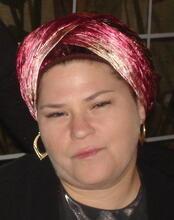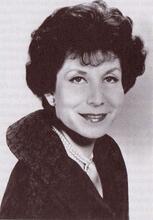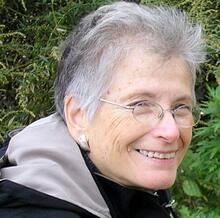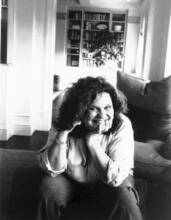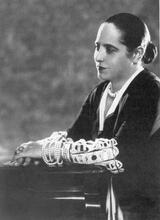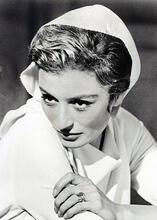Haredi Women's Filmmaking in Israel
In the early twenty-first century, films made by and for members of the Haredi community began to flourish, first in Israel and then in the United States and elsewhere. These included films made for Haredi women that are becoming increasingly popular. Although rabbinical inspectors often intervene in filmmaking, Haredi women have made films that display more aesthetic polish and higher production quality than men’s films; Haredi women filmmakers often incur significant out-of-pocket expenses to achieve lavish productions. Haredi women’s films often focus on relationships among women and address issues that until recently were considered taboo, such as the obligation to cover one’s head, the prevention of pregnancy, and forbidden love. Recently, the ultra-Orthodox have begun to appear more frequently in Israeli feature films and document cinema, as well as in LGBT films.
Challenges for Haredi Women Filmmakers
In the first two decades of the twenty-first century, An ultra-Orthodox JewHaredi cinema began to flourish, first in Israel and then in the United States and other countries. Haredi communities consume films in ways that thwart comparison with general cinema, watching them in makeshift halls (such as wedding and sports arenas) rather than in secular cinemas. Haredi women’s films in Israel are shown in community centers, sports facilities, wedding halls, and Haredi girls’ high schools in Haredi cities and population centers such as Jerusalem, Bnei Brak, Upper Modi’in, Kiryat Sefer, Betar, Beit Shemesh, Safed, Haifa, Ofakim, and Kiryat Gat. At four main occasions during the year—the intermediate days of Lit. "booths." A seven-day festival (eight days outside Israel) beginning on the 15th day of the Hebrew month of Tishrei to commemorate the sukkot in which the Israelites dwelt during their 40-year sojourn in the desert after the Exodus from Egypt; Tabernacles; "Festival of the Harvest."Sukkot, Lit. "dedication." The 8-day "Festival of Lights" celebrated beginning on the 25th day of the Hebrew month of Kislev to commemorate the victory of the Jews over the Seleucid army in 164 B.C.E., the re-purification of the Temple and the miraculous eight days the Temple candelabrum remained lit from one cruse of undefiled oil which would have been enough to keep it burning for only one day.Hanukkah, the intermediate days of A seven-day festival to commemorate the Exodus from Egypt (eight days outside Israel) beginning on the 15th day of the Hebrew month of Nissan. Also called the "Festival of Mazzot"; the "Festival of Spring"; Pesah.Passover, and the longest break in the Haredi school schedule (summer vacation, between the months of Av and Elul 1)—about a million and a half Haredi women and girls of all ages watch Haredi films in Israel and abroad. Haredi women’s cinema is gaining popularity among ultra-Orthodox communities both in Israel and around the world.
Until the 2010s, Haredi films created by men were sold on DVD at retail chains and other shops, like any other product; those made by women, by contrast, were first shown in classrooms in girls’ high schools and gradually evolved into video vehicles and then into movies shown in closed venues for women only. Both the rate of production and the number of loyal female viewers continue to grow every year.
As Haredi cinema solidified and achieved wider dissemination, rabbinical inspection mechanisms dictated how Haredi women filmmakers could go about their craft and what Haredi art should look like. In the early men’s films and in the women’s films, this “inspectorate” even claimed the right to intervene blatantly in the act of art-making: reviewing filmscripts before production, meddling with plots, and deleting scenes for reasons of aesthetics, immodesty, or improper conduct; sometimes this occurred after editing, or even after the script was approved. Inspectors had the power to strike down films despite the vast resources invested in them, simply because of a heroine who failed to “represent” appropriate appearance or conduct. In the unusual event that a film made its way to the screens despite warnings, the inspectors made sure to disavow it publicly by means of street posters that explicitly banned it for viewing. The inspectorate also made sure to demand that an educational and moral message be presented prominently and unchallenged, prompting artists to be overly cautious and to self-censor in order to stay well within the limits. This “inspection” no longer applies to films made by men, but in the past decade, such intervention into women’s films has been so strong as to deprive artists of their creative freedom and leave them too wary to overstep the limits.
Contrasts Between Haredi Male's and Women's Filmmaking
Over the past two decades, Haredi women’s cinema has focused on relationships among women (aunts, neighbors, friends, sisters, mothers and daughters, grandmothers and granddaughters, colleagues). By contrast, early Haredi men’s cinema dealt with relationships among men (with emphasis on friends, Torah study partners, rabbi–student relations, neighbors in apartment buildings or public worship, and male fraternity in service in the Israeli army or the Shin Bet) and focused less on the world of emotion and family relationships. Visually, women’s films display aesthetic polish and an international atmosphere that are reflected in the quality of production, while men’s films are meant to be viewed at home and are produced on shoestring budgets. Ultra-Orthodox women take out loans or even mortgages on their homes to produce a film of high aesthetic quality.
From an aesthetic standpoint, Haredi women’s cinema invests much importance not only on landscapes but also on architectural grandeur and costumes, while male Haredi filmmaking dismissed the importance of aesthetics and steered clear of women’s aesthetics for reasons of modesty. Men’s and women’s Haredi cinema diverge in terms of genre, too. Men’s films focus on action, suspense, and entertainment; those by women turn to melodrama and realism. Genre sheds light on the different perspectives of Haredi men’s and women’s films regarding composing scenes and positioning cast members.
The Haredi women’s film industry took on interesting new dynamics when Haredi men began to participate in it. Male Ultra-Orthodox filmmakers, generally using female pseudonyms, are now directing films for women in which female characters play central roles. For example, Yehuda Grobeis makes films for women under the name Mali Gross, while Ariel Cohen operates under the brand name “Cohen and a half. And a seal in the name of a Cohen.” Today, the most conspicuous women creating Haredi films specifically for women are Dina Perlstein, Rechi Elias, Tali Avrahami, and Tsila Schneider. Male and female filmmakers are now daring to address issues that, until recently, were considered taboo, such as the obligation to cover one's head, the prevention of pregnancy, trauma, and forbidden love. Haredi filmmakers also market and distribute their films, making them accessible to audience of Haredi women in Israel and in Diaspora Orthodox communities such as those in Antwerp, Monsey, and London.
Investment in and Distribution of Haredi Women’s Films
Investing in a Haredi film means investing in a full-length nonfiction film (about 120 minutes). Most of the women filmmakers put their own money on the line because, notwithstanding the financial risk, they know that a successful Haredi film can generate a healthy profit after covering its production costs. The basis of funding for Haredi films is the box office. A ticket for a debut film can cost NIS 80 (about $27), not only because of the investment in producing the work but also because of the steep cost to the artist of renting a venue. After two seasons, ticket prices fall to NIS 10–NIS 40, but the film’s popularity slips proportionately as new films appear and crowd out the old. Haredi families, having to pay dearly for several daughters and daughters-in-law to enjoy a night at the movies, demand full value for their money. This also dictates the long length of the films, even when it is unjustified from an artistic standpoint. There are exceptions. In his version of “The Big Win” for Haredi women, for example, Yehuda Grovais tried out a short format (75 minutes), and even created a 45-minute version. The abridgment caused the ticket price to fall. The audience appreciates the magnitude of the investment and sees its out-of-pocket expense as justified by aesthetic and lavish productions. Filmmaker Dina Perlstein, for example, is aware of this and invests hundreds of thousands of shekels in production:
I spend about a year and a half working on a film; the films are meant to be shown abroad, too. Aesthetics is about personal taste and I’m pleased when a film crosses borders. Production costs exceed two million shekalim and not every film pays its way. The financial investment puts me under enormous stress. People see the halls packed and think I’m getting rich, but that’s a very long way from what really happens. Yes, the Haredi public is very thirsty but not all Haredi families can afford to let their daughters go to a movie in public, and the schools have very limited budgets. As for making it worth my while, the sum that I invest should be somewhat proportional to what I get in return, but, sorry to say, it isn’t (Dina Perlstein, interview with the author, 2018).
Distribution of Israeli Haredi cinema to Haredi communities abroad began only in the 2010s; since then, most films have become international. Haredi cinema is flourishing with exceptional vigor in American Haredi communities. Among the most conspicuous works there are Robin Barbose’s A Light for Grey Towers (2007) and The Heart that Sings (2011); Tova (Tobi) Einhorn and Chava (Chavy) Klein’s A Blessing in Disguise (2009) and Almost a Family (2012); Robin Polin’s Ink Changes Everything (2006) and Diamonds in the Dust (2009); and Yuta Silverman Sheffield’s Manor (2009). One may also include works by filmmakers who cater to the population at large, such as Rachel Frankl’s Anonymous Benefactor (2012) and Paula Eiselt’s 93Queen (2018). At the same time, the ultra-Orthodox have begun to appear more and more in Israeli feature and documentary cinema, as well as in LGBT films. While these films, known in the research vernacular as "multi-sectoral," do not necessarily target the Ultra-Orthodox audience, they indirectly contribute to the processes of change the ultra-Orthodox cinema in general, and ultra-Orthodox women's cinema, are undergoing.
Vinig, Marlyn. Haredi Cinema. Tel Aviv: Resling, 2011. [Hebrew]
Vinig, Marlyn. A Cinema of Their Own: The New Female Wave of Haredi Cinema. Tel Aviv: Resling, 2020. [Hebrew]




